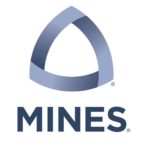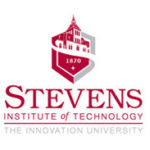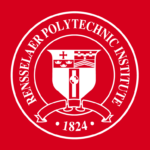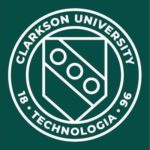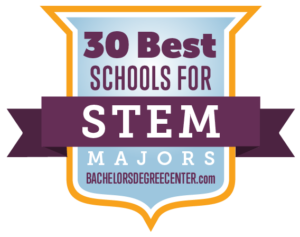
Key Information:
- The United States Merchant Marine Academy is the #1 best STEM program in the USA.
- Colleges offer a wide range of STEM degrees, including less common fields like Mining Technology and Urban Forestry.
- STEM fields are growing rapidly, with significant increases in available jobs and salaries higher than many other fields.
- Top schools provide robust resources and facilities, enhancing learning and research opportunities in STEM.
The Age of Information, the Digital Age, the New Media Age — regardless of what name it goes by, we are living in a digital time. Our economy has shifted from an Industrial Economy to an Information Economy. The world of technology is exploding, and for students who are interested in a STEM major like computer science, the future is bright.
According to the Bureau of Labor Statistics, jobs in STEM fields grew 10.5%, or over 800,000 jobs, between 2009 and 2015.
Growth in STEM careers continues to increase; computer science occupations specifically are projected to increase by an astronomical 500,000 between 2014 and 2024, and engineering and STEM-related management jobs are expected to top 50,000 each. The payoff for STEM schools is already showing. Among the 1,000+ schools ranked by Payscale, the median early career salary is approximately $46,000, and the median mid-career is $77,000. These figures compared to the top STEM schools are $66,000 and $113,000, respectively. Job availability, compensation, and opportunity make pursuing a STEM major an easy choice.
What is a STEM Major?
STEM stands for science, technology, engineering, and mathematics, so most majors that fall under this category are considered STEM degrees. The options are broad and include most of the degrees in science and engineering, as well as lesser-known degrees such as Animal Science and Nutrition, Agronomy and Crop Science, Environmental Studies, Urban Forestry, Mining Technology, Strategic Intelligence, Undersea Warfare, Nutrition Sciences, Archeology, and Veterinary Anatomy. An official list of STEM degrees from the government is found here.
A push for more STEM majors has taken place nationwide. In 2012, President Obama made increasing the number of college graduates in STEM fields by one million in one decade a Cross-Agency Priority goal and chartered the President’s Council of Advisors on Science and Technology to help meet this goal. Presidents Trump and Biden have continued with similar agendas. Potential students will find that the benefits of entering into a STEM program like computer science often exceed those of other programs.
Earning a STEM degree is one of the surest ways to secure future employment. The job market is booming, and the demand for highly trained professionals is enormous. STEM students will have to study hard, compete well, and focus during their college years. For those who are willing to enter into this challenging field, the reward is great — they will experience innovation, technology, research, and discovery. They may even change the world.
Methodology: The 30 Best Schools for STEM Majors
Creating a ranking for the best schools for STEM majors was a challenge. We examined the institutions of higher learning across the nation to find what STEM degrees they offered. STEM degrees were evaluated based on this list from the STEM Designated Degree Program list. The total number of STEM degrees conferred was compared with the total number of the degrees the institution conferred to calculate a percentage. Other pieces of data collected include Student to faculty ratio, annual tuition, graduation rate, and retention rate. These data points were calculated to give each school an overall score which was used to create the following ranking. All data was collected from the National Center for Education Statistics.
Considerations given to each of the criteria are as follows:
- Percentage of Bachelors Degrees Conferred in a STEM Discipline — 40%
- Student-to-faculty ratio — 20%
- annual tuition — 20%
- graduation rate — 10%
- retention rate — 10%
1. United States Merchant Marine Academy
- Location: Kings Point, NY

- Total Undergraduate Students: 954
- Student to Faculty Ratio: 13 to 1
- Percentage of Bachelors Degrees Conferred in a STEM Discipline: 100%
- Annual Tuition: $1020
The United States Merchant Marine Academy serves our nation by training leaders to work with honor in national security and marine transportation. The USMMA is rigorous in academic expectations and requires more credits than any other federal service academy.
“Deeds not words” is USMMA’s motto. A look at the Academy’s graduates reveals they’re an excellent STEM school. Though their offerings are not as diverse as larger universities, USMMA offers unparalleled training, leadership, and discipline. All students take a required core comprised of Mathematics, Science, English, Leadership and Ethics, Comparative Literature and History, Naval Science, Physical Education and Ship’s Medicine, Sea Year (all students will spend approximately one year at sea), and an internship. All students take a written examination after their first year for licensure to become a Merchant Marine Officer. There are five majors offered: Marine Transportation, Maritime Logistics and Security, Marine Engineering, Marine Engineering Systems, and Marine Engineering & Shipyard Management. Electives are offered to enhance majors, and depending on the major, can be taken for a minor. Overall, the clear distinction of the USMMA is the tradition, honor, excellence, and rigor of their STEM programs.
Top STEM Programs:
- Marine Science/Merchant Marine Officer
- Naval Architecture and Marine Engineering
- Systems Engineering
School Website: https://www.usmma.edu/
2. California Institute of Technology
- Location: Pasadena, CA

- Total Undergraduate Students: 961
- Student to Faculty Ratio: 3 to 1
- Percentage of Bachelors Degrees Conferred in a STEM Discipline: 98%
- Annual Tuition: $49,908
California Institute of Technology is famous for science and engineering. Knowing that Caltech has produced 38 Nobel Prizes, pioneered silicon chip design, discovered the positron, discovered gravitational waves, invented the pH meter, and more, is enough to show they are one of the best STEM schools with some of the best undergraduate engineering programs in the country.
Caltech academic divisions are divided into Biology & Biological Engineering, Chemistry & Chemical Engineering, Engineering & Applied Science, Geological & Planetary Sciences, Humanities & Social Sciences, and Physics, Mathematics & Astronomy. Not only does Caltech offer many STEM degrees, but they also have a student-faculty ratio of 3 to 1, a number of Nobel laureate faculty, and incredible resources. The Institute operates the Jet Propulsion Laboratory, the Seismological Lab, Space telescopes such as Spitzer, NuSTAR, Herschel, Planck, WISE, and GALEX, plus NASA facilities on campus, and International Observatory Network. This Network includes the Submillimeter Observatory in Hawaii, the Owens Valley Radio Observatory in California, the Laser Interferometer Gravitational-Wave Observatory (LIGO) in Washington and Louisiana, and the Chajnantor Observatory in Chile. Through these resources and numerous centers, students delve into STEM issues and research in the real world in real time.
Top STEM Programs:
- Computer Science
- Mechanical Engineering
- Physics
School Website: http://www.caltech.edu/
3. United States Coast Guard Academy
- Location: New London, CT

- Total Undergraduate Students: 1044
- Student to Faculty Ratio: 7 to 1
- Percentage of Bachelors Degrees Conferred in a STEM Discipline: 68.8%
- Annual Tuition: 0
Founded in 1876, the United States Coast Guard Academy offers bachelor degrees in Civil Engineering, Cyber Systems, Mechanical Engineering, Electrical Engineering, Naval Architecture and Marine Engineering, Operations Research and Computer Analysis, Marine and Environmental Sciences, Government, and Management. It is the only federal service academy that does not require a congressional nomination for admission.
At the USCGA, you can earn a STEM degree and pay no tuition. Graduates are commissioned to serve our nation, and with that, is ensured excellent work opportunities. Cadets will have “sound bodies, stout hearts, and alert minds” and a “high sense of honor.” Outstanding engineering, cyber, environmental science, and naval architecture programs feature experienced faculty and small class size. Cadets have the option to enter an Honors Program; Honors include International summer internships and scholarships for graduate study such as the Rhodes, Marshall, Fulbright, Truman, and more. Should you be drawn to graduate work in STEM, there are a plethora of options: Aeronautical Engineering, Aviation Safety Systems, Information Operations & Cyber Intelligence, Naval Engineering to name just some. The Center for Arctic Study & Policy (CASP) at CG is a tremendous opportunity for some hands-on, real-world learning. CASP features specialists in STEM fields and facilitates collaboration to further our knowledge.
Top STEM Programs:
- Mechanical Engineering
- Civil Engineering
- Oceanography, Chemical, and Physical
School Website: www.uscga.edu
4. Massachusetts Institute of Technology
- Location: Cambridge, MA

- Total Undergraduate Students: 4,547
- Student to Faculty Ratio: 3 to 1
- Percentage of Bachelors Degrees Conferred in a STEM Discipline: 93.3%
- Annual Tuition: $49,832
Massachusetts Institute of Technology is one of the most renowned research universities in the world. MIT’s accolades include nearly 100 Nobel laureates many Rhodes, Truman, and other scholars and recognition by numerous major ranking organizations.
STEM and MIT go together like ham and eggs. MIT’s has 30 departments across five schools, three of which fit into the STEM designation: Architecture and Planning, Engineering, and Science. Incredible research facilities, labs, and opportunities abound allowing for maximal focus on discovery, hands-on learning, and innovation that affects the real world. A sampling of labs and resources include a wind tunnel, a research nuclear reactor, a glass lab, and UROPs (undergraduate research opportunities) just to scratch the surface. MIT is home to America’s oldest Aerospace program. As for undergraduate engineering programs, few schools can claim to offer as many degrees or as good as faculty. Choices range from Biological and Chemical Engineering to Electrical and Nuclear with everything in between. Whatever STEM area you’re interested in, odds are, MIT has it. Should you be admitted and apply yourself, you’ll soon be inventing robots, discovering cures, and making advances in areas of science that all serve our society and world.
Top STEM Programs:
- Computer Science
- Mechanical Engineering
- Mathematics
School Website: www.mit.edu/
5. United States Naval Academy
- Location: Annapolis, MD

- Total Undergraduate Students: $4,495
- Student to Faculty Ratio: 8 to 1
- Percentage of Bachelors Degrees Conferred in a STEM Discipline: 62.3%
- Annual Tuition: 0
The United States Naval Academy was established in 1845. It serves the vital purpose of training officers for the Navy and Marine Core to protect our land and people. Located in Annapolis on a campus that is a National Historic Landmark, the Academy specializes in STEM programs.
The purpose of Navy’s education is to train servicemen and women who are “proficient in scientific inquiry, logical reasoning and problem-solving.” The Academy offers about 20 STEM majors. Information Technology, Mathematics, Mechanical Engineering, Naval Architecture & Marine Engineering, Nuclear Engineering, Quantitative Economics, and Ocean Engineering are a few. Another factor that shows the Navy’s dedication to STEM is the fact that since 2013, at least 65 percent of graduates commissioned into the U.S. Navy must complete academic majors in STEM disciplines. Students (midshipmen) and faculty at USNA also reach out to teachers and students K‑12 to promote STEM programs. Not only is this service to our society, but it also helps develop leadership skills. Navy’s Center for Cyber Security Studies (CCSS) and the USNA Makerspace highlight two resources to enhance a STEM area. The Makerspace “is a space to share ideas; to tinker with, hack, modify, and explore technology; and create the future.”
Top STEM Programs:
- Systems Engineering
- Mechanical Engineering
- Ocean Engineering
School Website: www.usna.edu
6. Harvey Mudd College
- Location: Claremont, CA

- Total Undergraduate Students: 861
- Student to Faculty Ratio: 8 to 1
- Percentage of Bachelors Degrees Conferred in a STEM Discipline: 97.4%
- Annual Tuition: $54,636
Offering a private, undergraduate education since 1955, Harvey Mudd College focuses on STEM disciplines. The school shares a campus and resources with the seven institutions that make up Claremont Colleges.
Harvey Mudd College ranked #1 by U.S. News and World Report for “Best Undergraduate Engineering Programs” and #3 by Forbes’ “Top 25 STEM Colleges.” HMC offers bachelor’s degrees in Chemistry, Mathematics, Physics, Computer Science, Biology, Engineering, as well as several interdisciplinary STEM degrees. The third most popular stem major is an interdisciplinary degree in Mathematics and Computer Science. If you are looking for an interdisciplinary option for STEM programs, HMC offers their Individual Program of Study (IPS). The IPS option requires a unique combination of two or more STEM disciplines, faculty support, and approval from the Academic Dean. In addition to the academic options are outstanding resources. There are three Interdisciplinary Centers, Hixon Center for Sustainable Environmental Design, Design Education, Hixon-Riggs Program for Responsive Science and Engineering. HMC has study abroad options, several opportunities for research funding, summer research options, and the Clinic Program, a 50-year old collaboration between research and industry.
Top STEM Programs:
- Engineering, General
- Computer Science
- Physics, tied with Mathematics and Computer Science
School Website: www.hmc.edu
7. Rose-Hulman Institute of Technology
- Location: Terre Haute, IN

- Total Undergraduate Students: 2,168
- Student to Faculty Ratio: 11 to 1
- Percentage of Bachelors Degrees Conferred in a STEM Discipline: 100%
- Annual Tuition: $48,012
Rose-Hulman Institute of Technology is dedicated to STEM education. The small, private school has been the #1 U.S.News and World Report “Undergraduate Education in Engineering” for 20 years running, and better still, they have experience stretching all the way back to 1874.
Rose-Hulman is a kind of mecca for STEM learning, teaching, and research. The school offers 100 percent of their degrees in STEM disciplines. Known for academic rigor and teaching excellence, students enjoy small classes and fantastic facilities. The Branam Innovation Center fosters multidisciplinary collaboration; the MiNDs Lab explores nanotechnology, the Oakley Observatory researches star photometry, supernovae, and comets. In addition to research, Rose-Hulman provides all students with top-notch career services and support. Rose-Hulman Ventures is a program that brings together students and technology-based companies. Rose has a 98 percent job placement rate, with three career fairs, and personal career service support. The Institute also offers study abroad and international exchange programs. All in all, Rose is the complete STEM package. Whether you love Biology and discovering “Magnetic Bacteria” or you’re looking for undergraduate engineering programs that will get you a great job, you’ll find it at Rose.
Top STEM Programs:
- Mechanical Engineering
- Chemical Engineering
- Computer Science
School Website: www.rose-hulman.edu
8. Colorado School of Mines
- Location: Golden, CO

- Total Undergraduate Students: 4,788
- Student to Faculty Ratio: 16 to 1
- Percentage of Bachelors Degrees Conferred in a STEM Discipline: 99.3%
- Annual Tuition: $37,436
In the late 19th century, an Episcopal bishop saw the need for higher education in Golden City. Now Colorado School of Mines, or “the Mines,” the School offers engineering and applied science degrees. The Mines has experienced new growth in recent years with a new student recreation center and the Center for Technology and Learning Media (CTLM). Research is important with over $65 million in research awards in 2018.
Mines’ mission is to “enhance understanding of the earth, energy and the environment.” To do this, STEM disciplines and degrees are their specialties. If you’re looking for engineering of any kind, odds are, Mines has it. A sampling of options includes chemical, civil, electrical, mechanical, biomedical, metallurgical, geophysical, nuclear, and petroleum. Mines also offers graduate degrees as well as a combined Bachelor/Master program. The School provides research facilities and opportunities to enhance and complement classroom instruction. The Colorado Center for Renewable Energy Economic Development (CREED) is a research partnership among the National Renewable Energy Laboratory and Colorado’s premier research universities. CREED has three areas/centers of research: Biofuels, Solar, and Wind. Another noteworthy aspect of Mines is the undergraduate research opportunities. Through Research Experience for Undergraduate Students (REU), you can pursue independent research in renewing our nation’s water system, help advance polymer materials, and research renewable resources.
Top STEM Programs:
- Mechanical Engineering
- Petroleum Engineering
- Chemical Engineering
School Website: www.mines.edu
9. Worcester Polytechnic Institute
- Location: Worcester, MA

- Total Undergraduate Students: 4,435
- Student to Faculty Ratio: 13 to 1
- Percentage of Bachelors Degrees Conferred in a STEM Discipline: 96%
- Annual Tuition: $48,628
“Theory and Practice” is the motto of Worcester Polytechnic Institute; the motto perfectly sums up WPI’s educational model. Through 14 departments and with over 50 degree programs (mostly in STEM), WPI trains students through “The Plan,” an individualized plan the blends theory, practice, and personal interest. WPI’s 97 percent retention rate demonstrates its effectiveness.
The WPI Plan is the distinctive element of the school. The Plan features hands-on learning, global immersion, project-based learning, individualized and personalized courses, and team-based learning. This educational model not only prepares excellent engineers but also involves students taking responsibility on day one for their life and education. Employers consistently comment on how good graduates are at working with teams, conflict resolution, and problem-solving. As for STEM areas, you’ll find few schools better. WPI offers engineering, computer science, mathematics, biology, physical sciences, and more. The school is best known for their engineering, a discipline particularly suited to the educational philosophy of engaging real-world problems through project-based learning. WPI won the prestigious 2016 Bernard M. Gordon Prize for Innovation in Engineering and Technology. With about 20 centers/institutes you have research and learning opportunities in many areas. For example, you can explore Holographic Studies and Laser micro-mechaTronics or Global Public Safety. These unique opportunities make WPI an excellent choice.
Top STEM Programs:
- Mechanical Engineering
- Electrical and Electronics Engineering
- Computer Science
School Website: www.wpi.edu
10. United States Air Force Academy
- Location: USAF Academy, CO

- Total Undergraduate Students: 4,276
- Student to Faculty Ratio: 8 to 1
- Percentage of Bachelors Degrees Conferred in a STEM Discipline: 44.3%
- Annual Tuition: 0
“Integrity First, Service Before Self, Excellence in All We Do.” The United State Air Force Academy’s motto encapsulates their vision and purpose. The Academy is a service training school for cadets seeking to become commissioned officers. Admission is very selective, and students pay no tuition.
Once admitted to the Academy, your adventure begins with Basic Cadet Training (BCT). BCT is a six-week intensive training that involves you physically, mentally and emotionally. Once you pass through the BCT, you’ll enter your military education with a focus on military strategy, doctrine, heritage, and professionalism. As for STEM options, it’s helpful to know that more than half of Academy graduates choose flight training, with the remaining 40 percent in STEM areas: Sortie Generation/Logistics (Missile Maintenance, Intelligence), Operations (Air Traffic Controller, Space Operations), and Scientific/Technical (Civil Engineering, Communications, Acquisition). If you are interested in travel, service to our country, and Civil Engineering, USAFA may be the perfect fit. With thousands of Air Force facilities, you will fly all over the world in service to the nation. If you’re scientifically minded and love exploring technical aspects of lasers, nuclear engineering, and optics, USAFA will provide some of the best training in the world.
Top STEM Programs:
- Systems Engineering
- Aerospace, Aeronautical and Astronautical/Space Engineering
- Biology/Biological Sciences, General
School Website: www.usafa.edu
11. Rice University
- Location: Houston, TX

- Total Undergraduate Students: 4,001
- Student to Faculty Ratio: 6 to 1
- Percentage of Bachelors Degrees Conferred in a STEM Discipline: 72.9%
- Annual Tuition: $45,608
Rice University is a private research university in Houston, Texas. It is known for applied sciences and research, including over $140 million in 2016 and 62 percent of undergraduates participating in research.
Of Rice’s eight schools, there are three dedicated to STEM disciplines: the School of Architecture, George R. Brown School of Engineering, and Wiess School of Natural Sciences. There are many options to choose from in terms of stem degrees. A sampling includes Biochemistry, Computer Science, several Engineering degrees, Nanotechnology, Computational and Applied Mathematics, Cognitive Science, Astronomy, and Astrophysics. There are STEM centers in nanoscale science, computing and information technology, quantum phenomena, and more that provide a key element in making Rice an excellent STEM school. The BioScience Research Collaborative is impressive. The facility is 477,000 square feet, gold-certified by LEED, includes ten floors, labs, an auditorium, classrooms, an exhibition hall, and research technology all in the service of fostering collaboration, innovation, and education. Not only does Rice produce results like inventing artificial hearts, or forming Nobel and Pulitzer prize and National Medals of Science winners, the University’s Office of STEM Engagement (R‑STEM) encourages, promotes, and trains students and educators K‑12.
Top STEM Programs:
- Computer and Information Sciences, General
- Chemical Engineering
- Mechanical Engineering
School Website: www.rice.edu
12. Michigan Technological University
- Location: Houghton, MI

- Total Undergraduate Students: 5,890
- Student to Faculty Ratio: 13 to 1
- Percentage of Bachelors Degrees Conferred in a STEM Discipline: 86.3%
- Annual Tuition: $32,318
Michigan Technological University was established in 1885 to train mining engineers and was the first post-secondary in the Upper Peninsula. What began as four faculty members and 23 students is now a flourishing tech school of 7000 with 120 undergraduate and graduate degrees in mostly STEM disciplines.
At MTU students make nanosatellites, improve prosthetic ankles, and connect robots with kids through service learning. Students also earn the sixth-highest starting salary in the country at a median salary of $60,000. With nearly 20 research institutes and centers, you will have access to the latest technology and research equipment. Another distinction MTU offers is their setting and location. For many STEM disciplines access to our natural resources are important, and in the UP and the Great Lakes, there isn’t a more pristine and beautiful place to contemplate, study, and conduct research. Engineering is the most popular and known STEM discipline with over 60 percent of students in 12 undergraduate and 29 graduate engineering programs across eight departments. The Enterprise Program is a unique aspect of MTU STEM education. The Program brings together students from various majors to work on “real projects, with real clients…to invent products, provide services, and pioneer solutions.”
Top STEM Programs:
- Mechanical Engineering
- Electrical and Electronics Engineering
- Civil Engineering and Chemical Engineering
School Website: www.mtu.edu
13. Stevens Institute of Technology
- Location: Hoboken, NJ

- Total Undergraduate Students: 3,123
- Student to Faculty Ratio: 10 to 1
- Percentage of Bachelors Degrees Conferred in a STEM Discipline: 81.9
- Annual Tuition: $50,554
An impressive retention rate of 94 percent at Stevens Institute of Technology in Hoboken, New Jersey is a strong indication of success. SIT was founded in 1870 by innovators and inventors and continues that strong tradition today.
A glance at Steven’s location, setting, and facilities illustrates a high activity in research, enterprise, and innovation. SIT is home to two national research centers, the Maritime Security Center (MSC) and the Systems Engineering Research Center (SERC). The MSC pioneers innovation in keeping our ports safer and the SERC works with the Department of Defense and more than 20 collaborating universities in Systems Engineering. There are too many centers to mention. One is the Stevens Venture Center, which provides opportunities for those interested in technology and applications in the business sphere. Engineering is the most popular STEM major, but there are many choices. A sampling includes research and training in artificial intelligence and cybersecurity, data science and information systems; life sciences; and resilience and sustainability are excellent as well. Something else worth noting is the strong placement record of SIT. Princeton Review ranked SIT as #9 for “Best Career Placement” in 2018.
Top STEM Programs:
- Mechanical Engineering
- Electrical Engineering
- Civil Engineering
School Website: www.stevens.edu
14. Missouri University of Science and Technology
- Location: Rolla, MO

- Total Undergraduate Students: 6,919
- Student to Faculty Ratio: 19 to 1
- Percentage of Bachelors Degrees Conferred in a STEM Discipline: 89.9%
- Annual Tuition: $25,918
Missouri University of Science and Technology was founded in 1870. As a public, land- and space-grant school, Missouri S&T continues to pioneer research and lead in STEM programs. The University is known for engineering, so if you are looking for engineering, you’ll find fewer better places to study than Missouri S&T.
The College of Engineering and Computing features 18 engineering and computing undergraduate degree programs and 19 Master’s degree and Ph.D. programs. It’s not only engineering, though. Consistently ranked for undergraduate research and graduate programs, the School takes research very seriously. Missouri S&T has a focus in four Signature Research Areas: Advanced Manufacturing, Advanced Materials for Sustainable Infrastructure, Enabling Materials for Extreme Environments, and Smart Living. Center for Statistical and Computational Modeling of Biological Complexity. Some examples of research include work on how nanoparticles can improve medicine, how smartphones can enhance our emergency systems, and how fruit flies can help improve sleep and treat Alzheimer’s disease. Like other schools that value STEM, Missouri has impressive centers and high-tech equipment such as an experimental mine! With fantastic facilities, labs, and programs, Missouri tops off the complete STEM experience with student groups and extracurricular options; for example, there is a chapter of Engineers Without Borders at Missouri S&T.
Top STEM Programs:
- Mechanical Engineering
- Electrical Engineering
- Engineering/Industrial Management
School Website: www.mst.edu
15. Rensselaer Polytechnic Institute
- Location: Troy, NY

- Total Undergraduate Students: 6,366
- Student to Faculty Ratio: 13 to 1
- Percentage of Bachelors Degrees Conferred in a STEM Discipline: 85.1%
- Annual Tuition: $52,305
Rensselaer Polytechnic Institute is the oldest technological research university in the U.S. The private, space-grant institution is set on 287 acres in Troy, New York. The most popular majors are Engineering, Computer Science, Business, and Mathematics and Statistics.
Rensselaer is all in for STEM. The Institute offers incredible STEM degree options, resources, research opportunities, and extracurriculars. RPI has 32 research centers, spends over $100 million in annual research, and has nearly 800 Ph.D. students. It’s also one of the STEM schools for graduate work. As for academic undergraduate STEM options, of all bachelor degrees conferred, 85 percent are in a STEM discipline. Besides renowned faculty (of which there are 176 Fellows of professional societies and 63 NSF CAREER Award recipients), there are a number of extra-curricular opportunities. These include the RPI Electrochemical Society, The American Society of Mechanical Engineers (ASME), American Society of Civil Engineers, a student chapter of the American Helicopter Society, and more. RPI has one of the largest supercomputers and operates the 1,250-acre Rensselaer Technology Park. Some rankings include #6 in USA Today’s top U.S. engineering colleges, and #42 out of 311 national research universities by U.S. News and World Report.
Top STEM Programs:
- Mechanical Engineering
- Bioengineering and Biomedical Engineering
- Electrical Engineering
School Website: https://www.rpi.edu/
16. Clarkson University
- Location: Potsdam, NY

- Total Undergraduate Students: 3,090
- Student to Faculty Ratio: 14 to 1
- Percentage of Bachelors Degrees Conferred in a STEM Discipline: 85.1%
- Annual Tuition: $47,950
Clarkson University in Potsdam, New York was born in 1896 after Thomas Clarkson’s unfortunate but heroic death in a sandstone quarry. Built and named in his honor, CU is a private research university known for Engineering.
Clarkson’s STEM presence is engineering, though the School offers computer science, mathematics, biology, and other STEM majors. CU has many research centers and opportunities. Their signature areas of research include data analytics, STEM and entrepreneurial education, healthy world solutions, and the next generation of advanced materials. With a global perspective, CU students engage and collaborate with over 380 active partners in industry, government agencies, chambers of commerce and research organizations. This network of collaboration also paves the way for a career. Students at CU note how career-focused the University is and how many internship options there are. This global focus doesn’t neglect our national needs as CU’s Institute for STEM Education promotes STEM education K‑12. Besides the beautiful 640-acre campus you will experience a classic college town in Potsdam that affords many extra-curricular and job opportunities. Notably, the four other schools in Potsdam: SUNY Potsdam, St. Lawrence University, SUNY Canton and Paul Smith’s College, have formed creative partnerships with one another.
Top STEM Programs:
- Mechanical Engineering
- Civil Engineering
- Engineering/Industrial Management
School Website: www.clarkson.edu
17. Georgia Institute of Technology
- Location: Atlanta, GA

- Total Undergraduate Students: 15,573
- Student to Faculty Ratio: 22 to 1
- Percentage of Bachelors Degrees Conferred in a STEM Discipline: 83.1%
- Annual Tuition: $33,014
Established during Reconstruction, Georgia Institute of Technology is now one of the premier technical and research schools in America. Georgia Tech’s main campus is in Atlanta, Georgia and features both green and historic buildings. Georgia Tech also provides education through their international campuses in France, Ireland, China, and Singapore.
Since the founding of Georgia Tech, the school has always been about building; whether rebuilding the South during Reconstruction or today, building 3D-printed tracheal splints used in groundbreaking pediatric surgery. Georgia Tech has many STEM options and advantages being a large school with over 15,000 undergraduates. The most popular STEM major is engineering, which is one the areas Georgia Tech is best known. In fact, the Engineering Department at GT is the largest in the nation. You can choose from over 15 engineering majors: Industrial, Biomedical, Environmental, Aeronautical, and Civil to name a few. If you’re looking to get into STEM careers, but are already working or would like online options, Georgia Tech’s Massive Open Online Courses (MOOC) offers many options. If you are interested in groundbreaking research, the School likely has an area of interest. They spend over $600 million in research per year. International opportunities are available in countries such as Australia, China, New Zealand, Spain, Hungary, France, the United Kingdom, and more.
Top STEM Programs:
- Mechanical Engineering
- Computer and Information Sciences, General
- Industrial Engineering
School Website: www.gatech.edu
18. Stanford University
- Location: Stanford, CA

- Total Undergraduate Students: 7,064
- Student to Faculty Ratio: 12 to 1
- Percentage of Bachelors Degrees Conferred in a STEM Discipline: 71.1%
- Annual Tuition: $49,617
Stanford University has a reputation for excellent education and research. Stanford boasts 17 Nobel laureates among the faculty offering world-class education in seven schools: Business, Earth, Energy and Environmental Sciences, Education, Engineering, Humanities and Sciences, Law, and Medicine.
Since 1891, Stanford has been a leader in research and education. Their commitment to STEM shows up in economic impact, student satisfaction, and numerous rankings. Regarding STEM offerings, Stanford is best known for Computer Science, Biology, Medicine, and Engineering. Along with every major, you will experience a campus alive with study and research and benefit from Stanford’s tradition and facilities. There are 6,200 externally sponsored projects, and Stanford spends over $1.6 billion on research. If you’re looking for cutting-edge research and training in medicine, biology, and healthcare, you’ll find few better places than Stanford. The University operates through the Stanford School of Medicine, Stanford Health Care, and the Lucile Packard Children’s Hospital. The Institute for Stem Cell Biology and Regenerative Medicine has recently discovered the protein used in making stem cells. The location and setting also aid in making Stanford a STEM powerhouse. The School owns over 8,000 acres, 700 buildings, and is located in the heart of California’s Silicon Valley.
Top STEM Programs:
- Computer Science
- Human Biology
- Mechanical Engineering
School Website: www.stanford.edu
19. Illinois Institute of Technology
- Location: Chicago, IL

- Total Undergraduate Students: 2,900
- Student to Faculty Ratio: 12 to 1
- Percentage of Bachelors Degrees Conferred in a STEM Discipline: 73.2%
- Annual Tuition: $45,864
The Illinois Institute of Technology story of how they were founded is one of the best. Chicago minister Frank Gunsaulus delivered what came to be known as the “Million Dollar Sermon,” where he claimed that with $1 million he’d build a school to educate all, not just the social elite. IIT is now a flourishing school focused on technology and research.
Illinois Institute of Technology’s very mission is to train students in STEM and in their words, training of “exceptional preparation for professions that require technological sophistication, an innovative mindset, and an entrepreneurial spirit.” Engineering at IIT is focused on four areas: Water, Health, Energy, and Security. IStudents mix and match these areas for on- and off-campus curricular and extracurricular activities. IIT offers STEM degrees in engineering, science, architecture, human sciences, and applied technology. At IIT you’ll find students and faculty developing nanoelectrofuel or nuclear fuel cladding, using computer science to thwart cyberattacks, and researching cancer prevention. With dozens of centers and institutes, the School is pushing the frontiers of technology and science to solve problems and contribute to a better planet and society. There are exciting opportunities at IIT for international students—four STEM business options. The option is for graduate programs in Management Science, Mathematical Finance, Marketing Analytics, and Sustainability Management.
Top STEM Programs:
- Mechanical Engineering
- Electrical and Electronics Engineering
- Computer Science
School Website: web.iit.edu
20. Carnegie Mellon University
- Location: Pittsburgh, PA

- Total Undergraduate Students: 6,533
- Student to Faculty Ratio: 10 to 1
- Percentage of Bachelors Degrees Conferred in a STEM Discipline: 66%
- Annual Tuition: $53,910
Carnegie Mellon University is a private research university founded by Andrew Carnegie. Located in Pittsburgh, Carnegie Mellon is one of only 25 universities to be a member of the World Economic Forum’s Global University Leaders Forum. CMU is an international university with campuses on six continents.
STEM education, promotion, celebration, and research all intersect at Carnegie Mellon. The School offers STEM options in many fields, the most popular being Engineering and Computer Science, but also robust options in Biology, Physical Sciences, and Mathematics. CMU also has a flourishing multidisciplinary program as well as over 100 centers and institutes. Research is woven into every aspect at the University from the top with the Strategic Plan, down to classes, students, and programs. CMU is a leader in promoting women’s STEM education. This year over 22,000 people attended the Grace Hopper Celebration, the world’s largest gathering of women technologists. Also, half of this year’s incoming freshmen in the School of Computer Science and College of Engineering were women. Another aspect of CMU’s STEM focus is on innovation and entrepreneurship. For example, the School of Computer Science Launched CMU AI, and this year the Office of Naval Research, Naval Research Laboratory, and CMU have partnered to promote STEM research into artificial intelligence for the U.S. Navy.
Top STEM Programs:
- Electrical and Electronics Engineering
- Computer Science
- Mechanical Engineering
School Website: www.cmu.edu
21. Princeton University
- Location: Princeton, NJ

- Total Undergraduate Students: 5,394
- Student to Faculty Ratio: 5 to 1
- Percentage of Bachelors Degrees Conferred in a STEM Discipline: 44.2%
- Annual Tuition: $47,140
Princeton University’s tradition is palpable: 65 Nobel laureates, 21 National Medal of Science winners, 209 Rhodes Scholars, and many prominent figures in our nation both past and present. Princeton is one of the nine colonial colleges founded before the Revolution.
Like all of Princeton’s Ivy-league education, the work they’re doing in STEM is high quality and impressive. Computer Engineering, Biology, and Operations Research are the most popular STEM majors. Princeton’s strategic goals to “broaden and deepen” STEM teaching and learning at the University is ambitious. Through the Association of American Universities (AAU) initiative for STEM, Princeton participates in giving undergraduates more experience and opportunities. For example, the Freshmen Scholars Institute (FSI) is an academically rigorous, seven-week summer program for entering Princeton University students. LabMatch helps first and second-year undergraduate students and graduate students in STEM disciplines by connecting them with researchers. And the Council on Science and Technology (CST) fosters research and appreciation of STEM areas with cultural fields and public affairs.
Top STEM Programs:
- Computer Engineering
- Operations Research
- Molecular Biology
School Website: www.princeton.edu
22. Case Western Reserve University
- Location: Cleveland, OH

- Total Undergraduate Students: 5,150
- Student to Faculty Ratio: 11 to 1
- Percentage of Bachelors Degrees Conferred in a STEM Discipline: 62.7%
- Annual Tuition: $47,500
Located in Cleveland, Ohio in the University Circle, Case Western Reserve University is a private university known for health sciences, biological sciences, business, and engineering. The School is a member of the Association of American Universities and is recognized for research and innovation.
Several rankings have noticed CWRU’s quality in STEM disciplines, notably Biological Sciences, Computer Engineering, and Biomedical Engineering. Overall, the University is solid in STEM education, research, and innovation. Case Western was ranked 72nd by Reuters in their 100 most innovative universities list. With only 36 schools in the nation spending more on research, CWRU is fully dedicated to discovery. CWRU is among the top institutions in the country in the percentage of baccalaureate graduates who go on to earn doctoral degrees in the sciences and engineering. The University’s Leadership Lab for Women in STEM offers hybrid degrees through a cohort model of learning. There are many initiatives aimed at increasing STEM learning and opportunities for undergrads through the Support of Undergraduate Research & Creative Endeavors (SOURCE). You can participate in on- or off-campus summer research, find research abroad, or participate in one of three funded research options: Chemistry/Biology, STEM, or Sustainability. SOURCE also connects you to the incredible resources of the University Circle.
Top STEM Programs:
- Bioengineering and Biomedical Engineering
- Computer Science
- Mechanical Engineering
School Website: www.case.edu
23. Purdue University
- Location: West Lafayette, IN

- Total Undergraduate Students: 32,132
- Student to Faculty Ratio: 13 to 1
- Percentage of Bachelors Degrees Conferred in a STEM Discipline: 52.4%
- Annual Tuition: $28,794
When businessman John Purdue donated land and money to found a college of science, technology, and agriculture he had no idea the incredible result of his generosity. Today, Purdue University in West Lafayette, Indiana is the flagship campus of the Purdue University System and educates over 30,000 men and women.
Since the founding of Purdue in 1869 as a land-grant university, the School has been dedicated to science and technology. Purdue has not been content though and has since upped their game in improving STEM learning and integrating it throughout the System. Through and with the AAU Purdue has redesigned 62 courses to improve STEM learning by maximizing student and faculty interactions, including more hands-on projects, group learning, less direct instruction, and more online and hybrid components. Their new, state-of-the-art STEM teaching facility was completed in 2020. The estimated $64 million facility includes 110,000 square feet of labs, a host of new technology, and ample space for research collaboration, events, and classes. Purdue’s wheelhouse of STEM is Engineering, which has been ranked and recognized nationally. Additionally, though, PU offers excellent programs in Actuarial Science, Analytical Chemistry, Aviation, and Mathematics. Lastly, undergraduate computer science has grown tremendously since 2012 and is helping to fill the country’s demand.
Top STEM Programs:
- Mechanical Engineering
- Industrial Engineering
- Computer Science
School Website: www.purdue.edu
24. Cooper Union for the Advancement of Science and Art
- Location: New York, NY

- Total Undergraduate Students: 868
- Student to Faculty Ratio: 9 to 1
- Percentage of Bachelors Degrees Conferred in a STEM Discipline: 52.1%
- Annual Tuition: $45,100
Art, architecture, and engineering for all people are what Cooper Union for Advancement of Science and Art is all about. Cooper Union has been a leader in STEM since their founding in the late 19th century and continues to this day. Each incoming student receives at least a half-tuition merit scholarship (valued at $21,625 per school year).
Cooper Union’s dedication to STEM is resolute. They have been ranked #3 in research culture among architecture schools worldwide by the Key Centre for Architectural Sociology and were ranked #7 in undergraduate colleges in civil engineering by U.S. News and World Report. Primarily known for outstanding Architecture and Engineering, Cooper Union offers STEM degrees in Chemical, Civil, Electrical, and Mechanical Engineering as well as in Architecture. The School has been successful and produced 39 Fulbright scholars since 2001 and 13 National Science Foundation Graduate Research Fellowships since 2004. Forty percent of undergraduates continue to graduate programs. Facilities are noteworthy at Cooper. The LEED-certified New Academic Building (NAB), is a nine-story, 175,000 square-foot premier academic facility fitted with labs, classrooms, and advanced green technologies. The C.V. Starr Research Foundation organizes and encourages multidisciplinary research and oversees several centers as well as provides financial support to senior-level engineering undergraduates.
Top STEM Programs:
- Mechanical Engineering
- Electrical Engineering
- Architecture
School Website: www.cooper.edu
25. Lehigh University
- Location: Bethlehem, PA

- Total Undergraduate Students: 5,075
- Student to Faculty Ratio: 9 to 1
- Percentage of Bachelors Degrees Conferred in a STEM Discipline: 53.8%
- Annual Tuition: $50,740
For 150 years Lehigh University in Bethlehem, Pennsylvania has delivered on its mission to “advance learning through the integration of teaching, research, and service.” The most popular majors at Lehigh are Finance, Mechanical Engineering, Accounting, Marketing/Marketing Management, and Chemical Engineering.
With slightly over 50 percent of Lehigh’s Bachelor degrees in STEM disciplines, you have some options: Engineering, Biological Sciences, Architecture, Mathematics, Environmental Studies, Computer Science, and several multidisciplinary options in STEM. LU has over 20 interdisciplinary programs in Biological and Physical Sciences, Cognitive Science, Science, Technology and Society, and several other unique combinations. This singular focus on integrating liberal arts and technology is catching on and bearing fruit. Other factors to consider at LU is the beautiful campus, state-of-the-art facilities, and excellent international opportunities, of which 43 percent of LU student engage. Another statistical takeaway is the ROI and average salary of graduates, which is an average of $61,000. So whether you want to study neuroscience or research and discover the Scarlet protein in fruit flies and its effect of those suffering from Parkinson’s or go into engineering to solve global problems, Lehigh is a legitimate option.
Top STEM Programs:
- Mechanical Engineering
- Chemical Engineering
- Industrial Engineering
School Website: www.lehigh.edu
26. Johns Hopkins University
- Location: Baltimore, MD

- Total Undergraduate Students: 6,109
- Student to Faculty Ratio: 7 to 1
- Percentage of Bachelors Degrees Conferred in a STEM Discipline: 47.5%
- Annual Tuition: $52,170
Johns Hopkins University was founded in 1876 by businessman, abolitionist, and philanthropist Johns Hopkins as the first research university in America. Since then it has become one of the most respected research universities on the planet, discovering cures, pioneering medical breakthroughs, and promoting a better society.
Undergraduates have many exciting STEM options at JHU—from majors to extracurriculars, to internships and research. JHU offers majors in Engineering, Biological and Biomedical Sciences, Communication Technologies, Computer and Information Sciences, Multi/Interdisciplinary Studies, Physical Sciences, and more. Additionally, JHU is renowned for graduate programs in STEM as well. One unique and defining characteristic of Johns Hopkins is the Applied Physics Laboratory. As the largest university-affiliated research center in the nation, the APL collaborates with public and private organizations to solve problems. The work of the APL spreads all across STEM majors and activities. From promoting STEM through the STEM Academy for 8–12th graders to the STEM Program Management Office that helps JHU students find and flourish STEM areas that fit their interests, JHU is strategically addressing the needs of our nation. As for undergraduate opportunities in research, you’ll find few better places than JHU. One example is the 10-week program in the summer through the Center for Sustainable Nanotechnology Research Experience for Undergraduates.
Top STEM Programs:
- Systems Engineering
- Aerospace, Aeronautical and Astronautical/Space Engineering
- Biology/Biological Sciences, General
School Website: www.jhu.edu
27. Harvard University
- Location: Cambridge, MA

- Total Undergraduate Students: 9,965
- Student to Faculty Ratio: 7 to 1
- Percentage of Bachelors Degrees Conferred in a STEM Discipline: 43.4%
- Annual Tuition: $48,949
Harvard University is the oldest institution of higher learning in America. With a reputation for rigorous academics, research, and a culture of engagement, the University continues to uphold its status as one of the more prestigious schools in the world.
When it comes to STEM options, Harvard has jumped in like many other universities. Areas of STEM majors include Biological and Biomedical Sciences, Computer and Information Sciences Engineering, Mathematics and Statistics, Natural Sciences, Environmental Studies, and Physical Sciences. Though many schools on this list specialize in Engineering and some offer those as one of their only STEM options, Harvard has a different mix. They offer excellent Engineering, but they also have excellent STEM programs in Evolutionary Biology and Applied Mathematics. Interestingly, the number of student concentrations (majors which are declared sophomore year) in science, technology, engineering, and math has grown tremendously in recent years. There are over 20 total choices in STEM with great multidisciplinary options as well. Research facilities are plentiful and provide state-of-the-art technology and the ability to collaborate, work across disciplines, with other organizations, internationally, and of course, with Harvard faculty. All in all, undergraduate STEM at Harvard is sure to exceed your expectations.
Top STEM Programs:
- Computer Science
- Evolutionary Biology
- Applied Mathematics
School Website: www.harvard.edu
28. Cornell University
- Location: Ithaca, NY

- Total Undergraduate Students: 14,907
- Student to Faculty Ratio: 9 to 1
- Percentage of Bachelors Degrees Conferred in a STEM Discipline: 50.6%
- Annual Tuition: $52,853
With name recognition throughout the globe, Cornell University has produced scholars, engineers, world-changers, and service leaders since 1865. The private, land-grant Ivy-league School offers degrees through 14 schools and operates research facilities throughout the world.
Science, technology, engineering, and math at Cornell have proven to be among the best in the country since Cornell’s founding. However, through the AAU, Cornell is improving STEM even more, altering their programs to fit with our times, students of this generation, and to the service of both mankind and knowledge. Cornell has announced it will be launching two new multi-college departments – one in statistics and data science, and one in computational biology. These will maximize faculty specialization, but also allow for creative collaboration, all in vital STEM fields for the 21st century. Besides these STEM fields, undergraduates choose from 40 different majors, the most popular being Biological Sciences, Computer Science, Agricultural Sciences, and Engineering. Along with attending Cornell, you will enjoy the incredible resources, centers, research facilities, and the beautiful campus in Ithaca. Overall, if you’re looking for a prestigious, research-driven school, few are better than Cornell.
Top STEM Programs:
- Biology/Biological Sciences, General
- Computer Science
- Agricultural Economics
School Website: www.cornell.edu
29. University of Michigan
- Location: Ann Arbor, MI

- Total Undergraduate Students: 29,821
- Student to Faculty Ratio: 11 to 1
- Percentage of Bachelors Degrees Conferred in a STEM Discipline: 42.4%
- Annual Tuition: $47,476
The University of Michigan is one of the largest and oldest universities in America. U‑M offers myriads of academic options at every level. Considered a Public Ivy, U‑M values research and spends over a billion dollars a year. In addition to academics, the School is known for its service.
UM offers much in the way of science, computer science, technology, engineering, and math. The extensive research institution provides many STEM majors with excellent facilities, labs and research opportunities, and extracurriculars. Besides the many options, UM offers a number of scholarships for those who plan to get their bachelor’s and move into graduate work. For example, the UM STEM Research Career Award is $5000 for summer research for sophomores and juniors, and the Astronaut Scholarship is up to $10,000. A unique program and approach at UM are the M‑STEM Academies. M‑STEM spans across many schools within UM and is a two-year integrated, holistic curricular and co-curricular support for students with talent in STEM but who may not have the same opportunities at a research university due to socioeconomic status, race, gender, or other factors. M‑STEM includes a summer transition program, two years of community building, academic coaching, research experiences, peer-led study groups, tutoring, supplemental math instruction, and various skills workshops.
Top STEM Programs:
- Computer Science
- Mechanical Engineering
- Neuroscience
School Website: www.umich.edu
30. Tuskegee University
- Location: Tuskegee, AL

- Total Undergraduate Students: 2,833
- Student to Faculty Ratio: 14 to 1
- Percentage of Bachelors Degrees Conferred in a STEM Discipline: 45%
- Annual Tuition: $22,170
Tuskegee University is a private, historically black university located in Tuskegee, Alabama. Lewis Adams and Booker T. Washington founded the School. The most popular areas of study are Engineering, Business, Agriculture, and Biology.
STEM majors at Tuskegee include Computer and Information Sciences, Engineering, Clinical Laboratory Science, Mathematics, Natural Resources and Conservation, Biological and Biomedical Sciences, Architecture, and Agricultural Sciences. The Leadership and Excellence by Tuskegee University Students’ (LET US) Academy for STEM majors is effective. LET US Academy for STEM works by helping students interested in STEM with networking, support, and guidance. The results speak for themselves. TU is the number one producer of African-American aerospace science engineers in the nation and produces over 75 percent of the African-American veterinarians in the world. Animal Sciences is the most popular STEM major. In step with TU’s famous graduate, Dr. Washington Carver, the University operates the Plant Biotechnology Research Center which trains scientists in the country and all over the world. All in all, Tuskegee is a high-ranking HBCU in many areas, but perhaps what shines the brightest is what they’re doing in STEM.
Top STEM Programs:
- Animal Sciences
- Biology/Biological Sciences, General
- Electrical and Electronics Engineering
School Website: www.tuskegee.edu
This list only represents a small portion of the schools in the nation that offer STEM majors. We believe these 30 to be the best our country has to offer. With the high percentage of STEM degrees provided in comparison with other degrees, you can be assured that the institution is focused on STEM education. These schools have the best research labs, scientists, and technology available for the best undergraduate engineering program.
Pursuing a STEM degree like computer science takes hard work, discipline, and sacrifice, but the payoff is great. Scientists are changing our world, and there is a tremendous need for graduates in STEM fields. We leave you today with a quote from Andra Keay, managing director, Silicon Valley Robotics, “Ask what do you want now, to free yourself from thinking about the limitations of the technology and let your imagination take you to what things do you want to have done, what problems do you want to solve.”
What STEM Jobs Pay the Most?
There are few careers that have the potential to earn six figures right out of college, but for STEM majors, this is possible. STEM jobs account for some of the highest-paying occupations out there. An engineering major claims the brightest future of all, but any graduate in the science and technology field also appears well-represented among those earning top salaries. Common attributes of these professionals include advanced mathematical, technical, or engineering knowledge, leadership and management skills, and high-level researching abilities. According to the Bureau of Labor Statistics, the highest paying occupations outside of those in the medical field are computer and information systems managers, who earn an average of $139,220 per year. Close behind are architectural and engineering managers at $137,720 per year, and in third petroleum engineers at $132,280 per year. Software developers make an average of $100,00 per year, a number which is only expected to increase. The average starting salary in a STEM field is $66,123, compared with $52,299 in non-STEM jobs. These figures are for entry-level STEM jobs that required a BA. Other high-paying STEM careers include computer science, nuclear engineers, marine engineers, chemical engineers, research scientists, aerospace engineers, and marine architects.
What are the Fastest-Growing STEM Occupations?
We’ve already covered the fact that occupations in the STEM field are growing rapidly and projected to continue to grow over the next 20 years. Inside the world of STEM, what are the fastest-growing occupations?
It may not come as a surprise due to the growing awareness of the need to care for our planet, but two of the fastest-growing occupations are wind turbine service technicians and solar photovoltaic installers. Both of these careers are projected to have almost 100% growth over the next ten years. While the people on the ground level of installation may not be at the top of the income bracket, with this field growing at such a rapid rate, STEM majors who specialize in these areas of sustainability won’t spend much time looking for a job.
Additionally, with the outburst of forest fires in the western United States over the last ten years, the need for forest fire prevention specialists is listed as one of the fastest-growing occupations. The University of California system is a top choice. Other careers that are in high demand and growing at a fast rate are mathematicians, information security analysts, operations research analysts, software developers, and statisticians. STEM majors won’t be disappointed, as our growing digital world has an ever-increasing, need for the scientifically-minded.
What Jobs Can Math Majors Get?
While science jobs are somewhat obvious and predictable – engineering, computer software development, research, etc., a commonly asked question is what do math majors do? According to the Bureau of Labor Statistics, “Employment of math occupations is projected to grow 28 percent from 2016 to 2026, much faster than the average for all occupations, which will result in about 50,400 new jobs. Growth is anticipated as businesses and government agencies continue to emphasize the use of big data, which math occupations can analyze. Math occupations had a median annual wage of $84,060 in May 2017, which was higher than the median annual wage for all occupations of $37,690.”
One of the top math jobs is a statistician. Statisticians analyze data and apply mathematics to help solve real-world problems in healthcare, business, engineering, and other fields. A lesser-known job with a high median salary of $116,476 is a cryptographer. A cryptographer works in the field of code-breaking and code signals. Financial institutions, intelligence agencies, and cable companies all hire cryptographers. Other careers available for math majors are actuaries, economists, financial planners, investment analysts, systems engineers, budget analysts, purchasing agents, marketing researchers, cost estimators, energy analysts, and math teachers.
Is a STEM Major the Right Fit?
Higher wages, job demand, and projected growth – it seems like choosing a STEM major is the right choice. But is it? According to a study by the Pew Research Center, more than 30 percent of Americans say they would encourage high school students to pursue jobs in a STEM-related field. Even the government is on board, President Donald Trump signed a memo dedicating $200 million dollars a year for technology education grants for women and minorities to nudge them into STEM majors.
While the push is there, it may not be the best choice for every student. STEM majors spent between 11 and 20 hours per week preparing for class. Classes are not the kind of classes you can just slide by in. They require diligence, hard work, preparation, and study. Students who aren’t really interested in the subject matter will struggle, but those who are passionate about their field of study and willing to work hard will find the rewards to be great.
If you are considering a STEM major, visit the college and attend some of the required classes. Look over the graduation requirements, talk to an advisor, and lastly, interview current students to get a grasp on what the degree really looks like.
Related Rankings:
25 Best Bachelor’s in Engineering Management
25 Best Bachelor’s in Electrical Engineering
25 Best Bachelor’s in Nuclear Engineering







